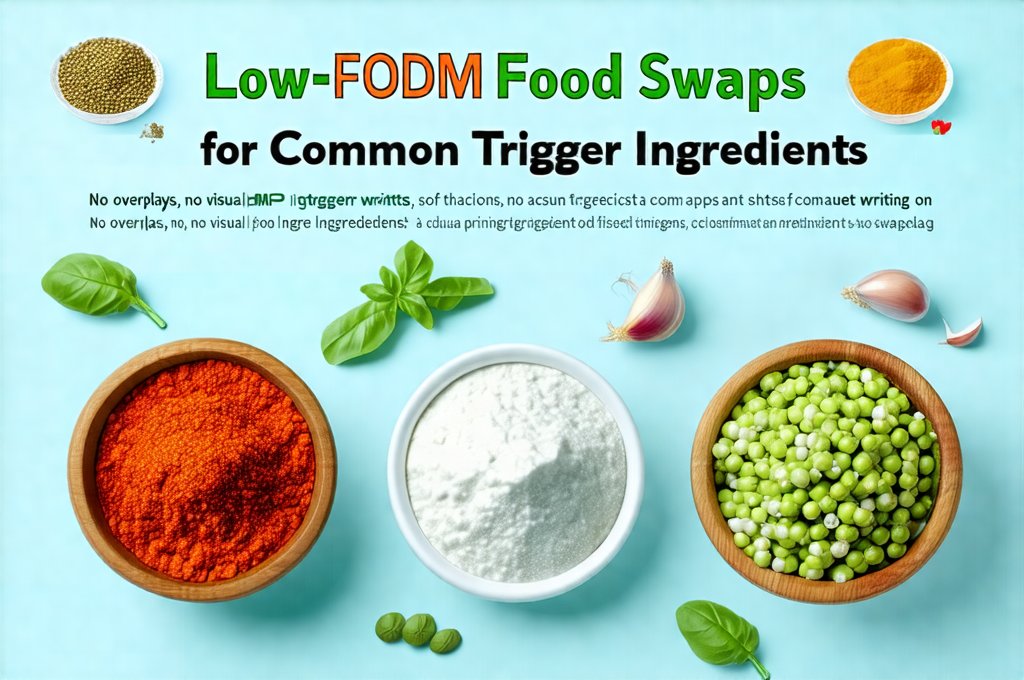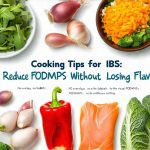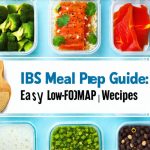Navigating dietary changes can feel overwhelming, especially when dealing with sensitivities or conditions like Irritable Bowel Syndrome (IBS). Many people find relief by adopting a low-FODMAP diet, which focuses on reducing fermentable carbohydrates that can trigger digestive symptoms. However, drastically altering your eating habits isn’t always easy – and it often feels like you’re eliminating everything enjoyable. The good news is that with a little knowledge and creativity, you can make surprisingly simple swaps to enjoy delicious meals while staying within low-FODMAP guidelines. This guide will empower you to confidently navigate the world of FODMAPs and find alternatives for common trigger ingredients without sacrificing flavor or satisfaction.
The low-FODMAP diet isn’t about deprivation; it’s about finding what works best for your body. It’s a process of elimination and reintroduction, guided by a healthcare professional to identify specific sensitivities. Understanding that FODMAPs are naturally occurring in many foods is key – the goal isn’t to avoid them entirely forever, but rather to manage intake based on individual tolerance. This article will focus on practical food swaps that can make the initial phases of the diet (and long-term maintenance) much more manageable and enjoyable for those looking to reduce their FODMAP intake.
Low-FODMAP Swaps for Common Ingredients
One of the biggest challenges when starting a low-FODMAP diet is identifying which foods contain high levels of FODMAPs and finding suitable alternatives. Many everyday ingredients – like garlic, onions, wheat, and certain fruits – are significant sources of these carbohydrates. Thankfully, there’s a growing number of delicious substitutes available that can help you recreate your favorite recipes without the digestive distress. For instance, garlic-infused oil (using only the oil after removing the garlic) offers a similar flavor profile to fresh garlic but avoids the fructan content. Similarly, lactose-free dairy products provide a convenient way to continue enjoying milk, yogurt, and cheese if you’re sensitive to lactose. If you are looking for more ways to navigate meal plans while avoiding high fat items, consider top food swaps as well.
Beyond simple substitutions, it’s important to consider how ingredients interact in recipes. Often, changing one ingredient can impact the overall flavor or texture. For example, swapping wheat flour for gluten-free alternatives requires adjusting liquid ratios or adding binding agents like psyllium husk to achieve a similar result. It’s also helpful to explore different cuisines that naturally utilize low-FODMAP ingredients – such as many Asian and Mediterranean dishes – which can provide inspiration and variety. Don’t be afraid to experiment and adapt recipes to your specific needs and preferences! If you find yourself struggling with post meal nausea, understanding common ingredients in restaurant foods may help.
Understanding FODMAP Categories
FODMAP stands for Fermentable Oligosaccharides, Disaccharides, Monosaccharides, And Polyols. Each category contains different types of carbohydrates that can cause digestive issues in susceptible individuals:
- Oligosaccharides (Fructans & Galacto-oligosaccharides – GOS): Found in wheat, rye, onions, garlic, and legumes.
- Disaccharides (Lactose): Present in dairy products like milk, yogurt, and soft cheeses.
- Monosaccharides (Fructose): Abundant in fruits, honey, and high-fructose corn syrup.
- Polyols (Sorbitol & Mannitol): Found in some fruits (apples, pears), artificial sweeteners, and sugar alcohols.
Knowing which FODMAPs trigger your symptoms can significantly refine your diet and improve your overall well-being. This is where the reintroduction phase, guided by a registered dietitian or healthcare professional, becomes crucial. It allows you to systematically test individual FODMAPs to determine your tolerance levels. For those managing nausea, bloating and discomfort, consider low-fodmap food ideas as a starting point.
Low-FODMAP Fruit Choices
Fruits are often a source of fructose or sorbitol, making them potential triggers for some individuals. However, many fruits can be enjoyed in moderation on a low-FODMAP diet.
- Safe choices: Bananas (less ripe), blueberries, strawberries, oranges, grapes, kiwi, cantaloupe, and honeydew melon are generally well-tolerated.
- Limit portions: Apples and pears contain sorbitol and should be consumed in smaller quantities.
- Avoid/Reduce: Mangoes, watermelon, peaches, cherries, plums, and dried fruits are higher in FODMAPs.
Remember to consider ripeness levels – riper fruits generally have a higher fructose content. Using portion sizes as guided by Monash University’s app (a reliable resource for low-FODMAP information) is always recommended. If you’re looking to incorporate more staple food options into your diet, there are many resources available.
Navigating Sweeteners & Sugar Alternatives
Traditional sugar and many artificial sweeteners can be problematic on a low-FODMAP diet.
- Safe options: Maple syrup, rice malt syrup, and stevia are generally well-tolerated in moderate amounts.
- Avoid: Honey (fructose), high-fructose corn syrup, sorbitol, mannitol, xylitol, and polyols.
- Consider: Glucose is often better tolerated than fructose.
When baking or cooking, experimenting with different sweeteners can help you find alternatives that maintain the desired sweetness without triggering symptoms. Always check ingredient lists carefully, as many processed foods contain hidden sources of high-FODMAP sweeteners.
Beyond the Basics: Creative Low-FODMAP Solutions
The low-FODMAP diet doesn’t have to be restrictive or boring. With a little creativity and planning, you can still enjoy a wide range of delicious and satisfying meals. Focusing on whole, unprocessed foods is always a good starting point. This allows you to control the ingredients and avoid hidden FODMAPs often found in pre-packaged products. Utilizing herbs and spices – such as ginger, turmeric, basil, oregano, thyme, rosemary, and chives – can add flavor complexity without triggering symptoms.
One of the most significant challenges is recreating familiar flavors without relying on garlic and onions. Garlic-infused oil provides a similar aromatic base for savory dishes, while asafoetida (hing) – a spice commonly used in Indian cuisine – offers a pungent aroma that mimics onion and garlic when cooked. Exploring different cuisines can also open up new culinary possibilities with naturally low-FODMAP ingredients. For example, Vietnamese pho or Thai curries made with coconut milk and lemongrass can be delicious and symptom-free options. It is important to note if alcohol is a trigger for your digestive issues as well.
Remember to prioritize hydration, as adequate water intake is crucial for digestive health. And don’t hesitate to seek support from a registered dietitian who specializes in the low-FODMAP diet – they can provide personalized guidance and help you navigate any challenges you encounter along the way. Understanding how food dyes and additives impact gut sensation may also be helpful.


















